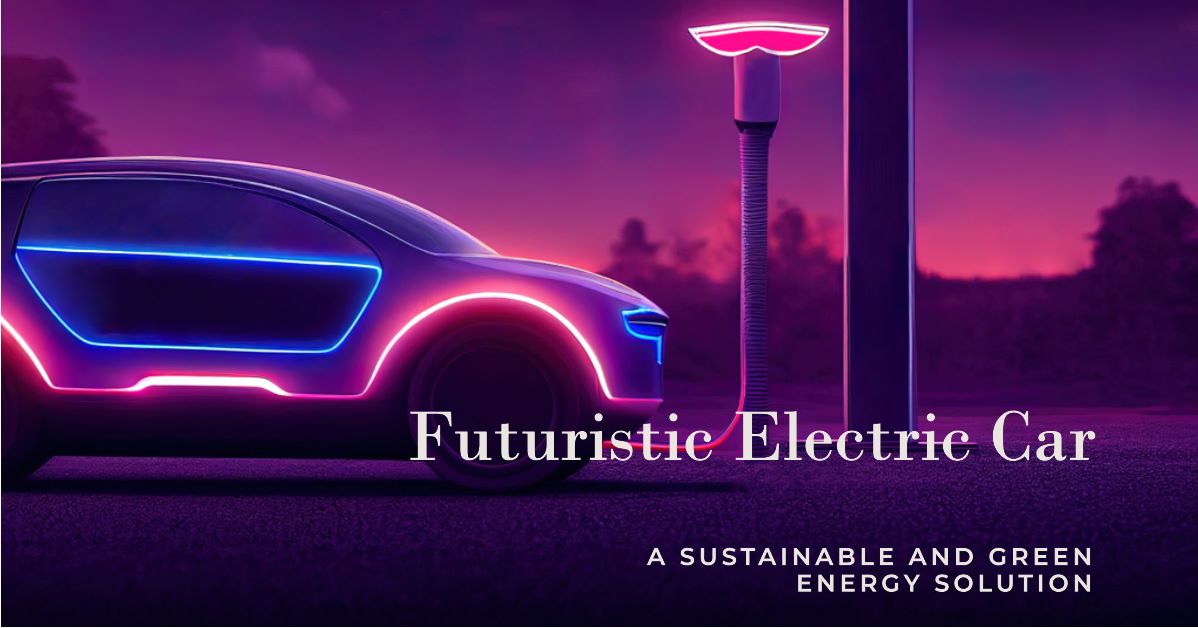
Summary of the Current State of Electric Vehicles
Electric vehicles (EVs) are vehicles that use one or more electric motors for propulsion.
They can be powered by a collector system with electricity from external sources, or autonomously by a battery, which may be charged by solar panels or by converting fuel to electricity using fuel cells or a generator.
EVs have been around since the late 19th century, but they have seen significant growth in recent years due to government incentives and increasing public awareness.
As of 2022, 14% of all new cars sold were electric, up from 9% in 2021 and less than 5% in 2020.
The global EV market size was $280 billion as of July 2022 and is expected to grow to $1 trillion by 2026.
Much of this growth is expected in markets like North America, Europe, and China.
The cost of lithium-ion batteries, a key component of EVs, has declined significantly over the past decade, making EVs more affordable, but recent increases in the price of critical minerals have put pressure on these price decreases.
Thought-Provoking Questions and Insights
1. Adoption in Developing Economies
While the adoption of electric vehicles is growing in developed economies, the article suggests that the growth of electric 4-wheeled vehicles appears economically unlikely in developing economies.
- Question: What are the key barriers to the adoption of electric vehicles in developing economies, and what strategies could be employed to overcome these barriers?
2. Environmental Impact of Battery Production
Electric vehicles are often promoted as a more environmentally friendly alternative to internal combustion engine vehicles.
- Question: How does the environmental impact of producing batteries for electric vehicles compare to the environmental impact of producing internal combustion engines?
3. Infrastructure for Electric Vehicles
The growth of the electric vehicle market is closely tied to the availability of charging infrastructure.
- Question: What are the current challenges in developing widespread and convenient charging infrastructure for electric vehicles, and how are different countries approaching these challenges?
Cleaner Cars from Cradle to Grave
Summary
The report by the Union of Concerned Scientists provides a detailed comparison of the environmental impacts of electric vehicles (EVs) and gasoline cars throughout their lifecycles—from manufacturing to operation and disposal. Key findings include:
Manufacturing Phase:
EVs generally have higher emissions during the manufacturing phase compared to gasoline cars.
This is largely due to the energy-intensive process of producing large lithium-ion batteries.
Manufacturing a mid-sized EV with an 84-mile range results in about 15% more emissions than manufacturing an equivalent gasoline vehicle.
For larger, longer-range EVs (more than 250 miles per charge), the manufacturing emissions can be as much as 68% higher.
Operation Phase:
Once they are on the road, EVs quickly begin to offset their higher manufacturing emissions due to their cleaner operation.
EVs are powered by electricity, which is generally a cleaner energy source than gasoline.
On average, EVs make up for their higher manufacturing emissions within 18 months of driving. Shorter range models can offset the extra emissions within 6 months.
End of Life:
By the end of their lives, gas-powered cars emit almost twice as much global warming pollution as equivalent electric cars.
Disposal of both types of vehicles produces relatively low emissions.
Overall Impact:
Despite the higher emissions associated with their production, electric vehicles ultimately result in far less climate pollution than their gasoline-powered counterparts.
This is due to the significantly lower emissions associated with their operation over time.
Thought-Provoking Questions and Insights
1. Battery Production and Sustainability
- Question: How can the environmental impact of battery production be further reduced, and what are the prospects for recycling or reusing EV batteries?
2. Regional Variability in Emissions
- Insight: The emissions associated with charging an EV vary depending on the electricity grid of a particular region. In areas with a clean electricity grid, EVs can be exceptionally low in emissions.
- Question: How can regions with coal-heavy electricity grids improve the environmental performance of EVs?
3. Future Trends
- Question: As the electricity grid becomes cleaner through the adoption of renewable energy, how will this further widen the gap in emissions between electric and gasoline vehicles?
The report emphasizes that as electricity generation becomes cleaner, the environmental advantages of EVs over gasoline cars are likely to grow further.
Global EV Outlook 2022
Summary
The Global EV Outlook 2022 is an annual publication that identifies and discusses recent developments in electric mobility across the globe. It is developed with the support of the members of the Electric Vehicles Initiative (EVI). The report combines historical analysis with projections to 2030 and examines key areas of interest such as:
- Electric vehicle and charging infrastructure deployment
- Energy use, CO2 emissions, and battery demand
- Related policy developments
This edition features an in-depth assessment of the EV battery supply chain and reviews government targets and strategies in this area. It assesses charging infrastructure development targets in key regions and includes a section on the integration of EVs into the distribution grid. The report also provides policy recommendations that incorporate lessons learned from leading markets to inform policymakers and stakeholders regarding policy frameworks and market systems for electric vehicle adoption.
Thought-Provoking Questions and Insights
1. EV Battery Supply Chain
- Question: What are the critical components of the EV battery supply chain, and how are countries ensuring the security and sustainability of this supply chain?
2. Charging Infrastructure Development Targets
- Question: What are some of the innovative approaches that countries are taking to rapidly scale up the deployment of EV charging infrastructure, and how are they addressing challenges such as site selection, power supply, and user convenience?
3. Integration of EVs into the Distribution Grid
- Insight: The integration of a large number of electric vehicles into the power grid poses challenges, such as potential overloads during peak charging times, but also opportunities, such as using EVs as distributed energy storage (vehicle-to-grid technology).
- Question: How are different countries planning and preparing for the integration of electric vehicles into their power grids, and what strategies are being considered to leverage EVs as grid assets?
The report makes available two online tools: the Global EV Data Explorer and Global EV Policy Explorer, which allow users to interactively explore EV statistics and projections, and policy measures worldwide.

The Global EV Outlook 2022 report by the International Energy Agency (IEA) provides an in-depth assessment of the electric vehicle (EV) battery supply chain and reviews government targets and strategies in this area.
However, the specific details from the report regarding the critical components of the EV battery supply chain and how countries are ensuring the security and sustainability of this supply chain are not available in the provided extract.
Nonetheless, based on general knowledge, one can provide an overview of the critical components of the EV battery supply chain and the strategies that countries might employ to ensure its security and sustainability:
Critical Components of the EV Battery Supply Chain
-
Raw Material Mining and Refining:
- Key materials include lithium, cobalt, nickel, manganese, and graphite. These materials are mined and then refined to a high level of purity.
-
Battery Cell Manufacturing:
- The refined materials are used to manufacture battery cells. This step involves the production of cathodes, anodes, and electrolytes, and the assembly of these components into cells.
-
Battery Pack Assembly:
- Battery cells are assembled into packs, which include additional components such as cooling systems, battery management systems, and protective casings.
-
Vehicle Integration:
- The battery packs are then integrated into vehicles, along with electric motors, power electronics, and other components.
-
End-of-Life Management:
- This includes the recycling or repurposing of batteries after they are no longer suitable for use in vehicles.
Strategies for Ensuring Security and Sustainability
-
Diversifying Supply Sources:
- To reduce dependency on a single country or company, nations are working to diversify the sources of critical raw materials.
-
Domestic Production and Processing:
- Some countries are investing in domestic production and processing of raw materials and battery components to reduce reliance on imports.
-
Recycling and Circular Economy:
- Establishing robust recycling infrastructure for batteries can help to recover valuable materials and reduce the demand for new raw materials.
-
Research and Development:
- Investing in R&D to discover new materials and improve battery technologies, potentially reducing the reliance on scarce or geopolitically sensitive materials.
-
International Collaboration and Standards:
- Countries are engaging in international collaborations to set standards for sustainable mining and production practices.
-
Strategic Stockpiling:
- Some countries are considering the stockpiling of critical raw materials as a buffer against supply disruptions.
-
Policy and Regulation:
- Governments are setting policies and regulations that encourage or mandate sustainable practices throughout the battery supply chain.
Please note that the strategies employed can vary significantly between countries based on their individual circumstances, resources, and policy priorities.
For detailed and specific information, I recommend downloading the full Global EV Outlook 2022 report from the IEA, which is expected to contain comprehensive data and analysis on this topic.


